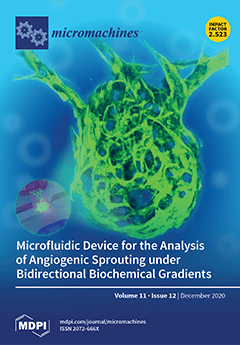The general preparation method of large-area, continuous, uniform, and controllable vdW heterostructure materials is provided in this paper. To obtain the preparation of MoS
2/h-BN and WS
2/h-BN heterostructures, MoS
2 and WS
2 material are directly grown on the insulating
[...] Read more.
The general preparation method of large-area, continuous, uniform, and controllable vdW heterostructure materials is provided in this paper. To obtain the preparation of MoS
2/h-BN and WS
2/h-BN heterostructures, MoS
2 and WS
2 material are directly grown on the insulating h-BN substrate by atmospheric pressure chemical vapor deposition (APCVD) method, which does not require any intermediate transfer steps. The test characterization of MoS
2/h-BN and WS
2/h-BN vdW heterostructure materials can be accomplished by optical microscope, AFM, Raman and PL spectroscopy. The Raman peak signal of h-BN material is stronger when the h-BN film is thicker. Compared to the spectrum of MoS
2 or WS
2 material on SiO
2/Si substrate, the Raman and PL spectrum peak positions of MoS
2/h-BN heterostructure are blue-shifted, which is due to the presence of local strain, charged impurities and the vdW heterostructure interaction. Additionally, the PL spectrum of WS
2 material shows the strong emission peak at 1.96 eV, while the full width half maximum (FWHM) is only 56 meV. The sharp emission peak indicates that WS
2/h-BN heterostructure material has the high crystallinity and clean interface. In addition, the peak position and shape of IPM mode characteristic peak are not obvious, which can be explained by the Van der Waals interaction of WS
2/h-BN heterostructure. From the above experimental results, the preparation method of heterostructure material is efficient and scalable, which can provide the important support for the subsequent application of TMDs/h-BN heterostructure in nanoelectronics and optoelectronics.
Full article






